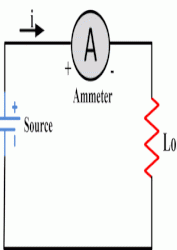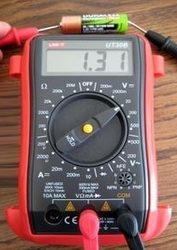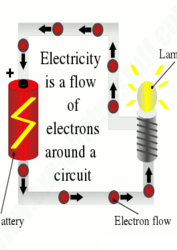When the current in a circuit is substantially less than an ampere, its value is determined by the use of a milliammeter or micro-ammeter, which measures full-scale currents in milli-amperes or microamperes, respectively. The symbol for the ammeter is a circle with the enclosed letter A, as shown in the following figure. In the above figure, an ammeter is inserted into the path of a current, that is, in series, so as to carry the current being measured. If an ammeter is of DC type, then it has polarity signs…
Category: Electrical Circuit Articles
Electrical Engineering Articles
Measuring Electricity
We can measure electricity in a number of different ways, but a few measurements are particularly important. Photo: You can use a digital multimeter like this to measure voltage, current, and resistance. Voltage The voltage is a kind of electrical force that makes electricity move through a wire and we measure it in volts. The bigger the voltage, the more current will tend to flow. So a 12-volt car battery will generally produce more current than a 1.5-volt flashlight battery. Current Voltage does not, itself, go anywhere: it’s quite wrong to talk…
How Electricity Moves in a Circuit
Materials such as copper metal that conduct electricity (allow it to flow freely) are called conductors. Materials that don’t allow electricity to pass through them so readily, such as rubber and plastic, are called insulators. What makes copper a conductor and rubber an insulator? A current of electricity is a steady flow of electrons. When electrons move from one place to another, round a circuit, they carry electrical energy from place to place like marching ants carrying leaves. Instead of carrying leaves, electrons carry a tiny amount of electric charge. Electricity can travel through something…


